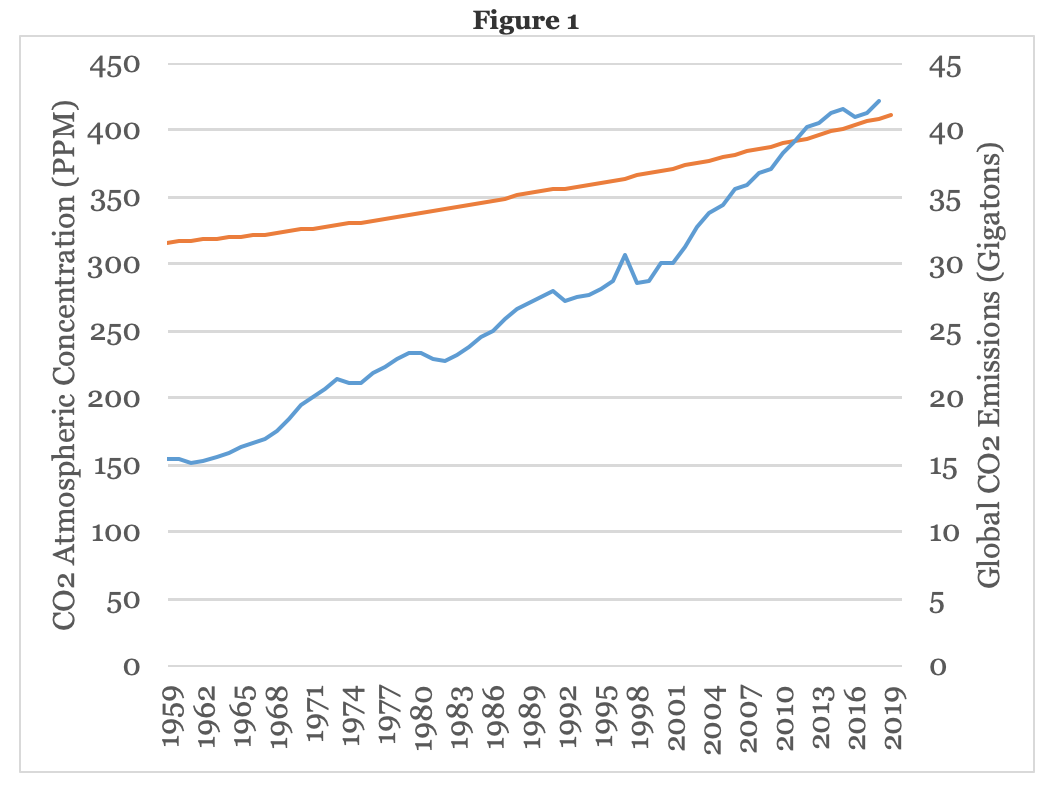
The world needs a new strategy to fight climate change aggressively and effectively.
Humanity is its own enemy in the war against the warming of our planet. To our peril, policymakers have ignored a deep insight attributed to Sun Tzu, from the fifth century B.C. Chinese military treatise, The Art of War: “Strategy without tactics is the slowest route to victory. Tactics without strategy is the noise before defeat.”
Environmental advocates, major international environmental agreements, and domestic policy programs have traditionally focused on a myopic one-prong tactic to fighting climate change. That prong is mitigation, the curbing of emissions. A better, well-crafted strategy to address the risks posed by climate change, however, would engage three prongs: continuing mitigation, while adding adaptation and amelioration to the armamentarium.
Were Sun Tzu writing on climate change today, he might describe the mitigation-only approach by invoking the metaphor of fighting a modern war relying solely on ground forces, while ignoring what air and naval forces could contribute. Consistent with his approach to war, he would likely support investments in adaptation and resilience to offset some of the damages associated with warmer temperatures. He would also advocate research into solar radiation management—such as injecting aerosols into the upper atmosphere to reflect back incoming solar energy—to lower the temperature for a given accumulation of atmospheric greenhouse gases.
Sun Tzu might also observe that, even within existing mitigation efforts, current tactics are haphazard. Some mitigation measures require that stakeholders pay vast amounts to curb emissions, while more economical measures lay fallow.
For example, consider the German power sector in 2010. Electricity generators there faced an allowance price of about 14 euros per ton of carbon dioxide (CO2) under the European Union’s Emissions Trading System. But at that time, the German subsidies for wind and solar power had implicit carbon prices of 77 euros and 562 euros per ton of CO2, respectively.
Similarly, in the United States, allowance prices in the Regional Greenhouse Gas Initiative in the northeast and mid-Atlantic states have been less than $6 per ton of CO2, while allowance prices in the California Cap-and-Trade Program recently have exceeded $15 per ton of CO2—a fairly modest gap. But by contrast the implicit cost of reducing U.S. CO2 emissions through fuel economy standards exceeds $200 dollars per ton.
The inconsistencies in mitigation costs across nations, even for the same policy instrument, are enormous: The Indian carbon tax, the coal cess, is the equivalent of about $4 per ton of CO2, while the Swedish carbon tax is greater than $120 per ton.
Furthermore, nations have developed solutions to address the inconsistencies plaguing existing mitigation efforts. Many low- and middle-income countries have made clear that they do not bear the responsibility for climate change, nor do they have the resources to address it.
In principle, enacting strategic carbon taxes in high-income countries could prove effective. Carbon taxes could generate revenues that would allow high-income countries to offer side payments to lower-income countries. Alternatively, a global cap-and-trade scheme could allocate emission allowances in a manner such that trading in the pursuit of cost-minimization would transfer resources to lower-income countries.
In practice, however, countries have generally pursued carbon pricing well below the levels necessary to avoid a climate emergency, and they have shied away from making significant transfers to lower-income countries. As Bill Nordhaus recently noted, to limit warming to no more than 2°C over the next 100 years, global carbon prices would have to increase to more than $100 per ton of CO2. Yet the current global price, when averaged across all sources and policies, amounts to about $3 per ton—woefully far below what is necessary for attaining mitigation goals.
Any sensible strategy will also adjust course if it starts to fare poorly. The nations of the world should therefore act, learn, and then act again. Ever since the 1992 United Nations Framework Convention on Climate Change, nations taking action have sought to control climate change solely by limiting greenhouse emissions. That approach is not working. The history of carbon dioxide emissions and atmospheric concentrations since 1959 is disheartening, as both the atmospheric concentration and the annual quantity of emissions have increased significantly despite the mitigation efforts of recent decades.

It comes as no surprise that global temperatures have also increased throughout this period, on average about 0.1°C of warming per decade, and that warming has accelerated in the 2000s. Even if emissions were miraculously cut by 50 percent by 2030, the Earth would be on track for additional temperature increases given that oceans—which absorb tremendous amounts of solar heat—have already warmed.
Lacking a spare planet to replace an over-heated Earth, surrender is not an option in the war against climate change. Instead, individual nations and international organizations need to adopt a strategy with a reasonable chance of success: a multi-pronged strategy, adding expensive adaptation and untested amelioration to emission mitigation. Rather than continuing to rely just on mitigation, climate policy should exploit all tactics that can cost-effectively reduce the public’s risk exposure.
Why has the fight against climate change adopted a near-singular focus on emissions mitigation? In part, this focus is due to the fact that this externality stretches across the globe and extends forward into future generations. A mitigation-only focus reflects the environmental community’s concern that promoting adaptation or geoengineering, such as solar radiation management, would reduce public support for mitigation. In short, there is a moral hazard concern that, given hopes about the gains to be made from adaptation and solar radiation management, pursuing other tactics would slow emission mitigation efforts.
The concern that adopting alternative strategies would discourage mitigation, however, should be weighed against the factors already discouraging emissions mitigation, including the strong incentives for free riding, or perhaps, more aptly, cheap riding. Persisting with the one-prong tactic implicitly accepts massive losses from climate change.
A three-prong strategy that embraces adaptation and solar radiation management at least offers hope. This strategy would pursue each prong—mitigating emissions, investing in adaptation, and implementing solar radiation management—to equate its overall marginal cost to the marginal benefit of the risk reduction. Aggressively advancing adaptation and solar radiation management, with whatever progress on emission mitigation can be achieved, will confront the severe, even catastrophic, impacts of climate change.
Effectively pursuing this more comprehensive approach to climate change will take time, as well as meaningful planning, research and development, institutional design—not to mention also a massive amount of resources. Building a coastal barrier to protect New York City, for example, will take years, if not decades, as the recent experience in Venice, Italy suggests. Developing the delivery vehicles for solar radiation management, as well as the research to assess and hopefully tame unintended consequences of solar radiation, is surely a decade’s project. Furthermore, mitigation technologies that could change the game—including large-scale battery storage and nuclear fusion—will be realized no more quickly.
Catastrophic climate change will be inevitable if national and international leaders, having neglected nature for decades, simply stay the course. Now is the time to add adaptation and amelioration to the world’s strategy for survival.
This essay is part of an eight-part series, entitled Celebrating The Regulatory Review’s Tenth Anniversary.





